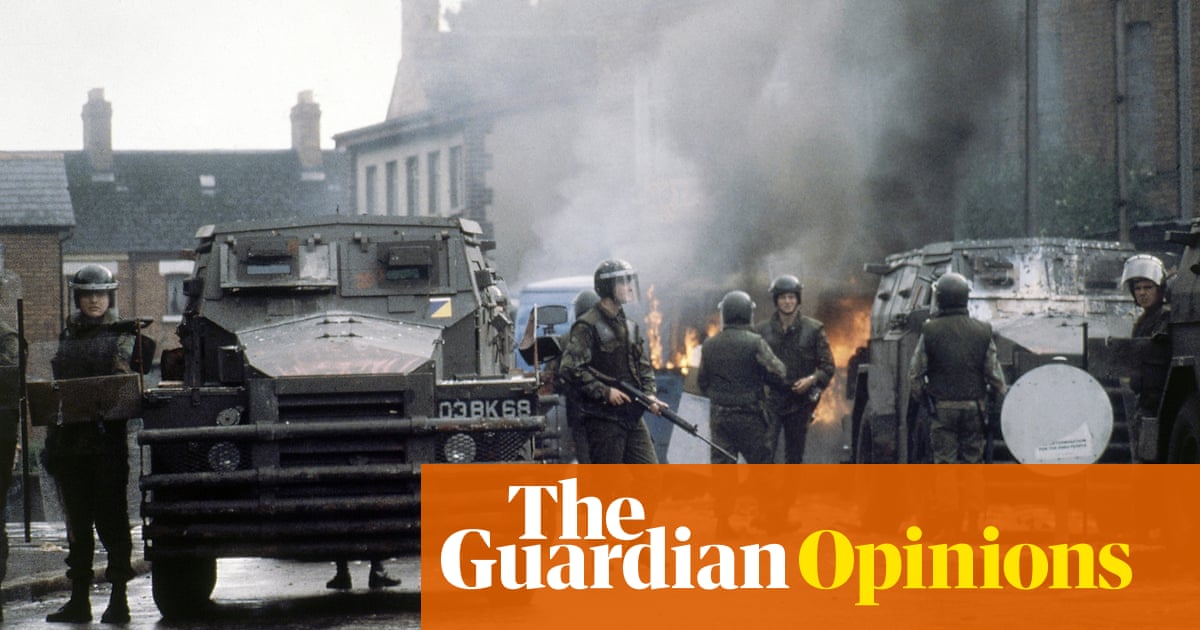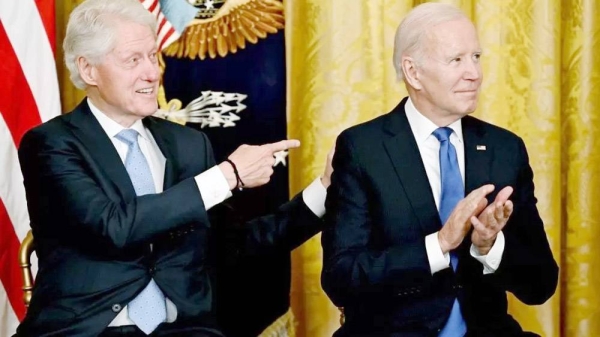
In 1998, there were children as young as 11 reading the full text of the Good Friday agreement in class, such was the unbridled excitement about the opportunity it represented to shape a better future. One might have expected that the globally revered peace agreement responsible for ending Northern Ireland’s 30-year conflict would become a permanent fixture in the curriculum, especially given the living document’s direct and tangible impact on the lives of young people today. At only 36 pages, it is tantalisingly accessible – although “not like a novel”, as Dominic Raab pointed out, when the Northern Ireland affairs committee asked if he had read it in its entirety. However, despite its inverse proportionality of brevity and significance, the Good Friday agreement forms no part of the core programme of study in schools in today’s Northern Ireland, and nor do the decades of conflict that preceded it.
In Northern Ireland, the generations born after the historic agreement made on 10 April 1998 are known as “peace babies”, and expected to be the baton-bearers of a true and lasting accord. But, rather than guide and teach them about the impact of the Troubles and the Good Friday agreement, our largely segregated education system delivers them into a hostile political wilderness that seems designed to harden their ignorance into apathy at best, or hostility at worst.
There are two barriers to young people accessing information about the Troubles through the standard curriculum, says 16-year-old Ellen Taylor, vice-president of the Secondary Students’ Union of Northern Ireland. “The first barrier is that people who don’t choose GCSE history don’t receive any education on the Troubles; [the second is that] if they do choose GCSE history, there’s a large minority of schools that do not teach the Troubles module.” As a result, Taylor says: “You’ve quite a small number of people who leave school having learned about the Troubles.”
The Council for the Curriculum, Examinations and Assessment (CCEA) allows schools to voluntarily include the Troubles module as part of GCSE history – an opportunity many decline. A survey conducted by the charity Parallel Histories in 2020 revealed a split along historical lines, with four out of 10 Protestant/state schools (defined by the survey as “with a Protestant denomination or controlled by the state rather than by the Catholic church”) opting not to teach the module, while nine out of 10 Catholic schools require it. This disparity is shocking enough, but it bears repeating that students who don’t study history don’t learn about the Troubles at all.
When it comes to learning about the Good Friday agreement – the catalyst and foundation for Northern Ireland’s power-sharing institutions – the story is much the same: only pupils who choose GCSE history and are taught the Troubles module will learn anything about it. Even then, what little information they’re given is sparse. One student, 18-year-old Aobh Hollywood, tells me that they are lucky if they spend “a week” on it, adding that: “We’re really not taught it properly; it’s all so exam-focused, you’re not really taught what it means.” Hollywood says the impact of this approach can sometimes “lead to radicalisation” – meaning that people may vote for the most extreme political party based on whether they see themselves as Irish or British, rather than policy – or more often, it can lead to “complete political apathy”.
Lauren Bond, a 16-year-old member of Northern Ireland’s youth parliament, says: “The Good Friday agreement has meant that I have grown up in peace. However, division still does thrive in today’s society and no child is immune to sectarianism; you are surrounded by it.” She took the GCSE Troubles module, but was disappointed by the content. “Everything that I’ve [learned] about the Troubles … I’ve had to source that information myself. I think that’s quite disheartening.” Bond launched a campaign in 2022 for Northern Irish history to be mandatory before GCSE level, after which a motion was ratified into policy by the youth parliament – a strong indication of how young people really feel.
Though they reverberate across society today, the impacts of the Troubles cannot always be easily seen. They are carried in the hearts and minds of people grappling with loss, grief and deep intergenerational trauma, who are offered little by way of therapeutic outlets. Instead of being processed, this unspoken legacy tends to be passed on to the next generation. They experience it through the division in their schools and communities and are denied the tools and information necessary to understand or interrogate it. “It’s dangerous not to teach about the past,” Taylor contends, and can lead to “increased sectarianism”. She concludes that the history curriculum needs to be expanded into key stage 3 and the “optional” element needs to be removed.
More than 600,000 people have been born in Northern Ireland since the Good Friday agreement was signed. They’re expected, simultaneously, to enjoy the benefits bestowed on them by those who came before, and to complete the vital work that is yet to be done. This is a generation held up on a pedestal and expected to become the future leaders of the peace process. But, as Bond asks: “How are we to be the future of a document that most people don’t know exists?”
As ugly, uncomfortable and painful as our past may be, we have to face it, and the onus should not be placed on our young people to seek out unregulated and unreliable sources of information beyond the walls of the classroom. We need to help young people to honour and understand the immeasurable importance of the Troubles and the Good Friday agreement. Keeping them in ignorance is a disservice to all those who lost their lives, and to all of us trying to build a better, more peaceful, future.
Emma DeSouza is a writer, campaigner and peacebuilder












